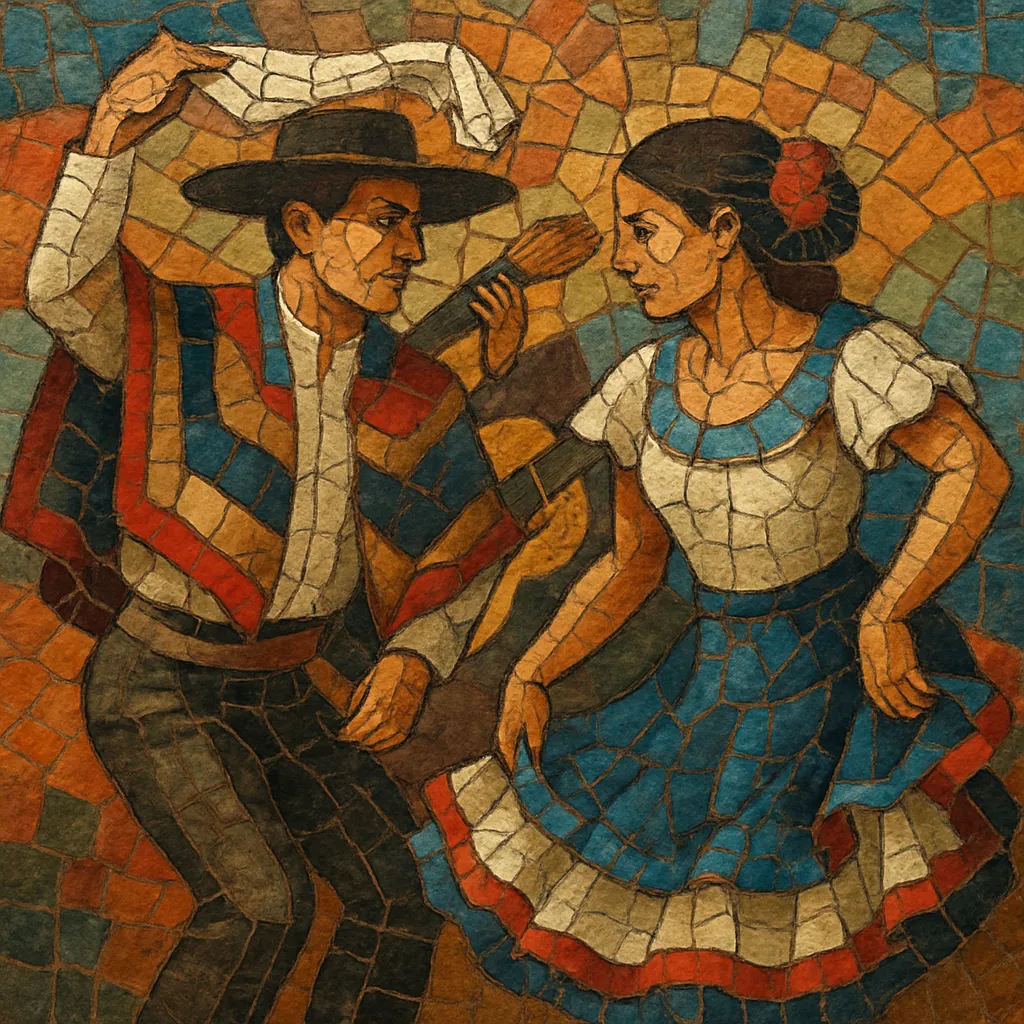Cueca is the national dance and a cornerstone folk music genre of Chile, characterized by a lively, flirtatious courtship between dancers waving handkerchiefs. Musically, it is known for its hemiola feel that alternates or superimposes 6/8 and 3/4, creating a propulsive swing suited to footwork such as zapateo and coqueteo.
A cueca performance typically features voice(s) with guitar, harp or guitarrón chileno, and light percussion (pandero, bombo), sometimes joined by accordion or violin. Strophic verses (coplas) with refrains (estribillos) are common, and singers pepper the music with interjections and hurras. Regional variants (central, nortina, and chora/brava) highlight different instrumentations and attitudes, from rural salon refinement to brass-led festival power and urban tavern grit.
Cueca took shape in Chile during the 1830s out of the broader zamacueca complex that circulated along the Pacific coast. It drew on Spanish dance-song models such as the fandango and seguidilla, and absorbed Afro–Latin rhythmic sensibilities that were already present in the zamacueca and related coastal repertoires. In Chile, these elements crystallized into a distinctive strophic song with a hemiola-driven accompaniment and a stylized, flirtatious partner dance using pañuelos (handkerchiefs).
By the late 19th century, cueca was a fixture of Chilean social life—from rural fondas to urban patios and salones—serving as both entertainment and a marker of local identity. Though long embedded in popular practice, it was officially declared Chile’s national dance in the 20th century, codifying its symbolic status. Throughout, singers, collectors, and folk ensembles helped fix conventional forms (cueca larga/corta, verse and refrain patterns) while sustaining regional flavors.
From mid-century onward, folklorists and artists (notably women collectors/performers) recorded and taught cueca, aligning it with national pedagogy and stage presentation. Later, nueva canción artists reworked cueca’s forms for social commentary while maintaining core rhythmic and poetic traits. Today, cueca thrives in competitions, fiestas patrias, peñas, and urban scenes, with young groups reviving the brava ethos and experimenting with instrumentation while honoring the characteristic 6/8–3/4 swing.


